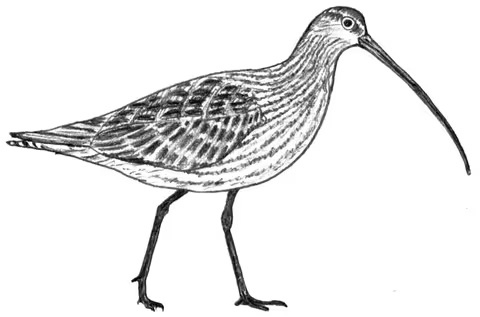Orcadian Stones
Share this page
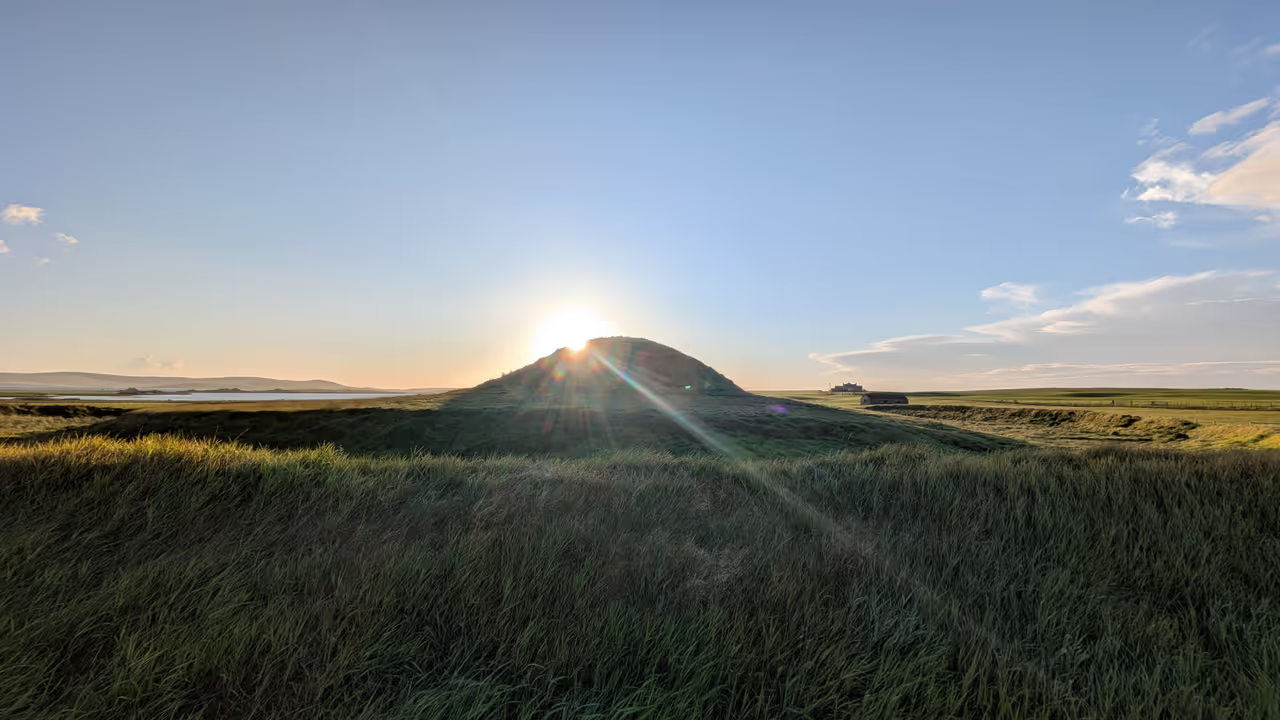
Just ten minutes after driving off the ferry at Stromness I’m standing on top of Maeshowe looking at one of the most awe-inspiring prehistoric landscapes in the world. Caroline made the mistake of letting me choose what we’re doing this evening, so she’s sitting in the van reading while I’ve jumped over one gate and another barbed-wire fence to scale this twenty-four-foot high Neolithic burial chamber. My smart mauve trousers are splattered in mud and the cows in the field are making a hell of a din, spooked by my intrusion. But I’m beyond excited to be here.

In the middle of Orkney’s mainland (the largest of its many islands) there is a pair of lochs (Stenness and Harray) that are connected to one another and the sea, yet they don’t feel part of the sea. They sit in a great sweeping green bowl, with hills on all sides, so it’s hard to imagine that the sea lies just beyond in each direction. It has a remarkably land-locked feel for these isles that are so dominated by the sea, reminding me of the great sweep of Salisbury Plain with the Wiltshire Downs rising on all sides. On an evening like this, when the sun has suddenly emerged from the clouds late on to bathe its soft outlines in syrupy rays, it’s not hard to understand why our ancient ancestors chose this as a place of great ceremonial importance.
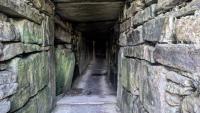
From the top of Maeshowe, around whose foot is a great circular earthwork and beneath which a stone-lined passage leads to a 5,000-year-old grave, I can make out all sorts of standing stones lining the thin limb of land that separates the two lochs. Rising like great scabbard blades from the short-cropped grassland, the monoliths of the Barnhouse Stone and Watch Stone compliment those of the stone circles at the Stones of Stenness and the Ring of Brodgar, leaving one in awe at their simple splendour.
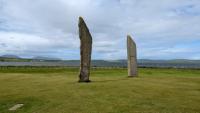
We stay by a tiny church in the midst of these, drinking wine in the churchyard as the sun sets across the loch and going to sleep when we realise it’s never really going to get dark.
In the morning I set off to explore the stones, first passing Barnhouse Neolithic village, a similar set of structures to that at Skara Brae but occupied a century earlier, as I hear a guide telling her tour group. At the Stones of Stenness I learn that a local farmer pulled down one of the blades and the ancient Odin Stone in the 19th century and was cast out by his community for daring to consider these stones an imposition on his farming work. By the Watch Stone, the road crosses a causeway between the two lochs, a narrow gap that might appear to be symbolic in the rituals that took place here, but which did not exist when sea levels were lower 5,000 years ago. More stones stand blithely in front of a farmhouse. A board informs me that a rough ridge between the farms on this narrow isthmus is actually largely composed of ruined neolithic building stone and its associated midden, as this was once the most important meeting place on these islands. The recent archaeological dig at the Ness of Brodgar has ended and its remarkable collection of structures has been covered over again, so it now looks like an urban wasteland scattered with slate. Its significance is easy to miss.
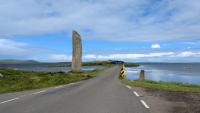
Not so the Ring of Brodgar, which looms large across the landscape, a 104m-diameter stone circle and earthen henge on an eminence between lochs. I take the informal route there, approaching through the meadows, undeterred by electric fences. When we meet him in the pub later, Davey the Diver will assure me that this is how Orcadians get about. On the post a few yards ahead of me, a redshank calls out – an elegant bird with bright beak and legs. The same cannot be said for the great skua that soon moves in; a jumbo jet of a bird, this large brown seabird with a snub-nose swoops menacingly over all the oystercatchers, kittiwakes and other smaller birds that fill the grass around me. Seeing so much life in one small area, though, I realise how much has been lost from England’s landscape.

As I near the great ring, a grey cloud moves in quickly across the Loch of Stenness while sun is still shining on the Loch of Harray. The rain starts a moment later and I cower in the lee of a burial mound, like a cow keeping a patch of grass dry. Somehow I stay mostly dry as the rain batters the stones and turns the sunny bowl into a dark, moody place. The stones that remain of the original 60 stand through it all, as tourists in anoraks scurry around before racing back to the car park.
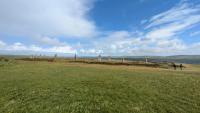
I finally continue my route up the ridge, scaling more electric fences to pass a small pond marked on the map as Sean, and up the next knoll past some giddy cows. The fields are dotted with more burial mounds and chambered cairns, their outlines more subtle. In the middle of a large field and high upon the ridge, the Ring of Bookan is a large henge with remains that may have been that of a chambered cairn or even a stone circle, but is still awaiting excavation in an area full of sites that have pushed it to the back of the queue. By now I’m being watched by a farmer in a pickup in the next field. I feel I have overstayed my welcome. I might have the Scottish Outdoor Access Code on my side, but I feel just as unwelcome in this sort of fenced farmland as I do anywhere south of the border. It’s great in principle, but I wonder how practical the right to roam is in a lot of places.

I head for a pair of gates and join the road to return to the van, still buoyed by the sense of awe that no amount of rain, wind or electric fencing can dispel, and aware that Orkney has so much more to see.
